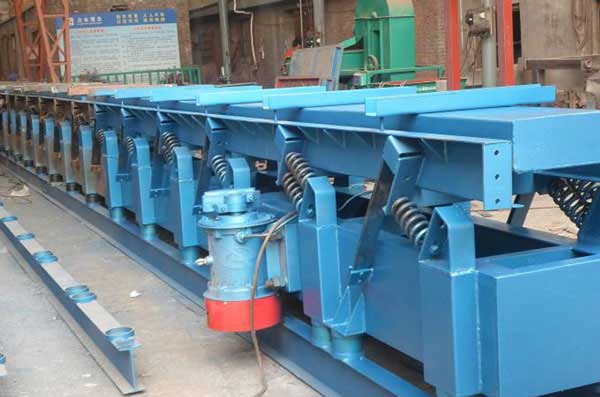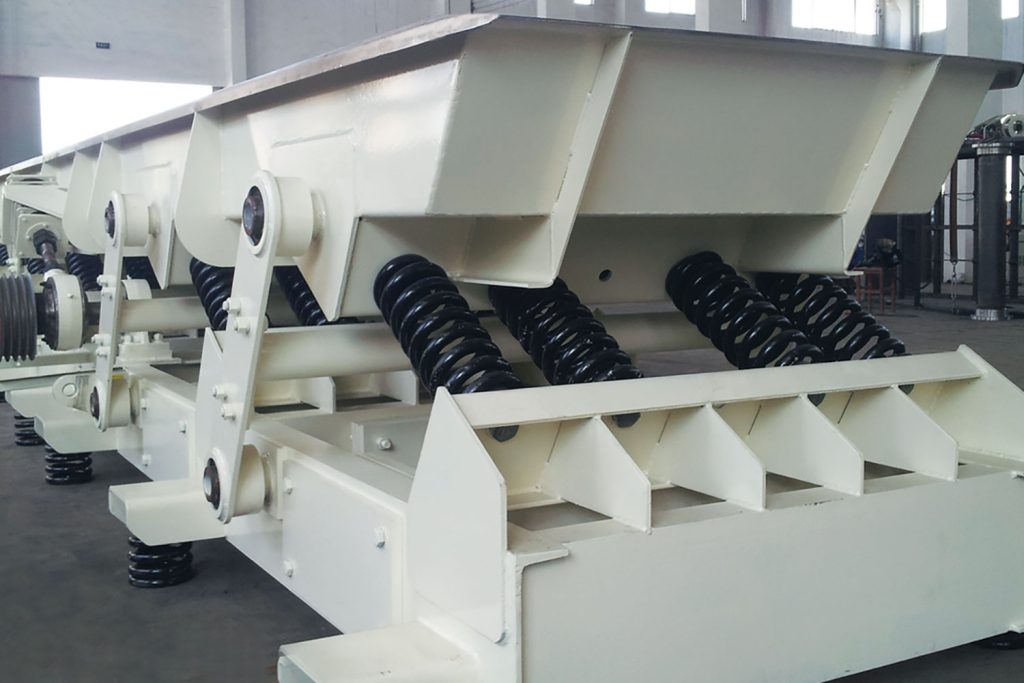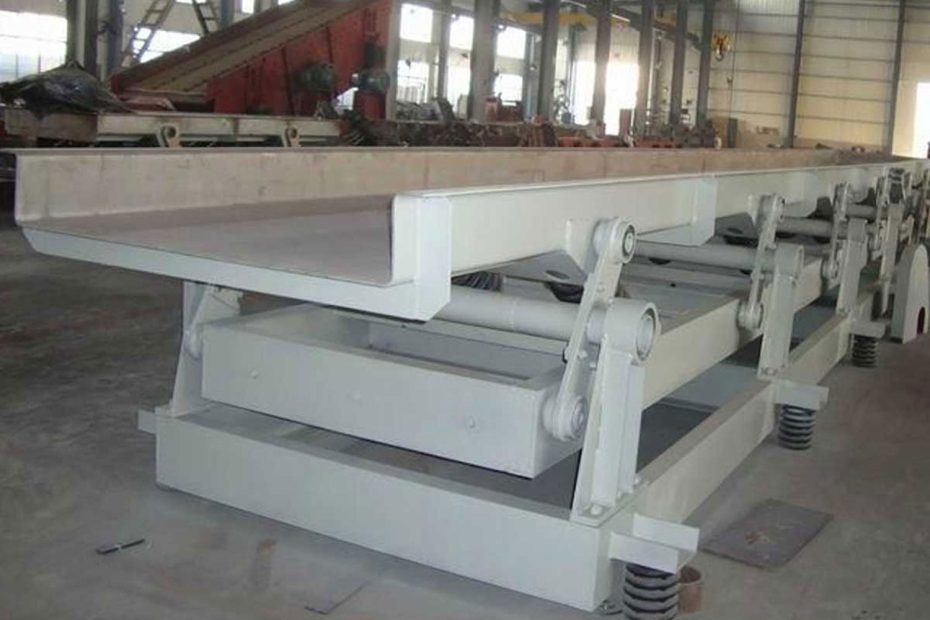Electromagnetic vibrating conveyors and motor vibrating conveyors are common vibrating material conveying equipment. Their working principle is to push materials from the feed port of the conveyor to the discharge port through vibration force to realize the conveying of materials.

- The electromagnetic vibration conveyor uses the vibration force generated by the electromagnet to push the material from the inlet to the outlet. The vibration frequency and vibration amplitude of the electromagnet can be realized by changing the magnitude and direction of the current. The vibration of the electromagnetic vibrating conveyor is relatively stable, and it can transport materials with high viscosity and easy blockage.
- The motor vibrating conveyor uses the centrifugal force generated by the rotation of the eccentric block driven by the motor to push the material from the inlet to the outlet. The motor vibrating conveyor has a simple structure and low cost and is suitable for material transportation with large particle size and large flow.
Advantage
The advantage of the electromagnetic vibrating conveyor is that the vibration is relatively stable, and it can transport viscous and easily clogged materials. The vibration frequency and vibration amplitude of the electromagnetic vibrating conveyor can be achieved by changing the magnitude and direction of the current.
The advantage of the motor vibrating conveyor is that it has a simple structure and low cost, and it is suitable for material transportation with large particle sizes and large flow.
Shortcoming
Compared with the motor vibrating conveyor, the electromagnetic vibrating conveyor has a relatively complex structure, high cost, and requires an external power supply. In addition, the electromagnet of the electromagnetic vibrating conveyor is easily disturbed by the magnetic field, resulting in unstable work.
The disadvantage of the motor vibrating conveyor is that the vibration is relatively unstable and the noise is large. At the same time, the motor vibrating conveyor needs regular lubrication to ensure the normal operation of the equipment.
Application
Electromagnetic vibrating conveyors and motor vibrating conveyors are widely used in material transportation and batching processes in construction, metallurgy, mining, chemical, and other industries.
In the construction industry, electromagnetic vibrating conveyors and motor vibrating conveyors are widely used to convey concrete, cement, mortar, and other materials. In the metallurgical industry, electromagnetic vibrating conveyors and motor vibrating conveyors are widely used to transport ore, slag, and other materials. In the mining industry, electromagnetic vibrating conveyors and motor vibrating conveyors are widely used to transport coal, ore, slag, and other materials. In the chemical industry, electromagnetic vibrating conveyors and motor vibrating conveyors are widely used to transport chemical raw materials, pigments, plastic particles, and other materials.

In addition, electromagnetic vibrating conveyors and motor vibrating conveyors are often used in the batching process to mix a variety of different materials in a particular proportion and then transport them to the production line.
